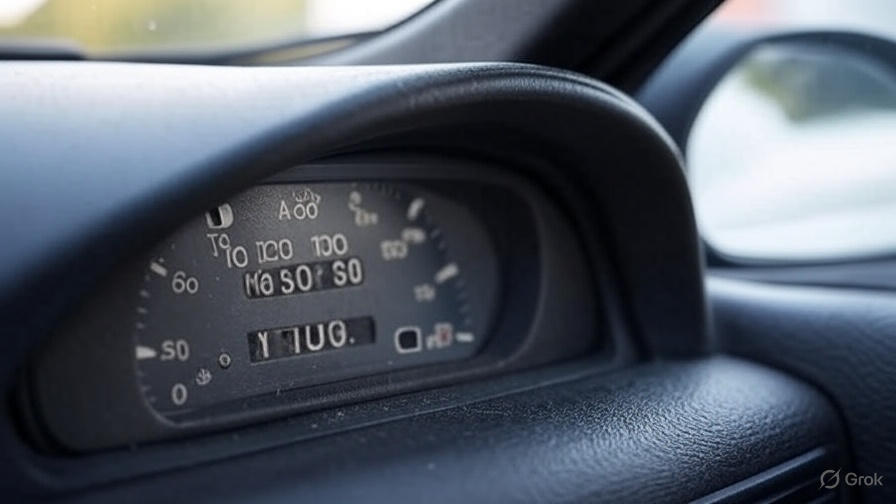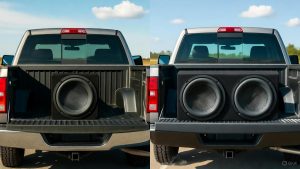Buying a used car comes with risks, and odometer fraud ranks among the most costly deceptions facing car buyers today. Vehicle mileage tampering affects over 450,000 cars sold annually in the United States, causing buyers to lose billions of dollars each year. Learning how to spot a rolled-back odometer protects your investment and helps you make informed purchasing decisions.
What Is Odometer Rollback and Why It Matters
Odometer rollback occurs when someone illegally reduces the displayed mileage on a vehicle’s odometer to increase its perceived value. This fraudulent practice, also known as “clocking,” involves manipulating either mechanical or digital odometers to show fewer miles than the vehicle has actually traveled.
The financial impact hits buyers hard. A car with 50,000 fewer miles on the odometer can command thousands of dollars more in resale value. Sellers who engage in this illegal activity exploit buyers’ trust and leave them with vehicles that have hidden mechanical problems, shorter remaining lifespans, and inflated purchase prices.
Federal law prohibits odometer tampering under the Motor Vehicle Information and Cost Savings Act. Violations can result in fines up to $10,000 per incident, plus potential criminal charges. Despite these penalties, enforcement remains challenging, making buyer vigilance essential.
Physical Signs That Reveal Odometer Tampering
Your first line of defense starts with examining the odometer itself. Mechanical odometers show several telltale signs when someone has tampered with them.
Check the number alignment carefully. Original odometers display numbers in perfect alignment, with each digit sitting at exactly the same height. Tampered odometers often show misaligned numbers because reassembly rarely achieves factory precision. Look for numbers that appear crooked, tilted, or positioned at different heights than their neighbors.
Examine the numbers for scratches, fingerprints, or unusual wear patterns around the odometer housing. Legitimate wear develops gradually over years of normal use, creating consistent patterns. Tampering leaves fresh scratches, smudges, or disturbed dust patterns that stand out from the surrounding area.
Digital odometers present different challenges but still offer detection clues. Look for signs of dashboard removal, including loose trim pieces, mismatched screws, or gaps between dashboard components. Professional tampering requires removing the instrument cluster, which often leaves subtle evidence of the work.
Vehicle Interior Wear Patterns Tell the Truth
The interior condition provides reliable mileage indicators that criminals cannot easily fake. High-mileage vehicles develop predictable wear patterns that contradict suspiciously low odometer readings.
Start with the driver’s seat, which bears the most consistent use. Genuine low-mileage cars maintain firm seat cushions with minimal compression. High-mileage vehicles show flattened cushions, worn fabric or leather, and permanent indentations from years of use. Pay special attention to the left side of the driver’s seat, where drivers slide in and out, creating concentrated wear.
The steering wheel reveals honest mileage through its condition. Low-mileage vehicles retain the original wheel texture and shape. High-mileage cars develop smooth, shiny spots where hands naturally grip the wheel. Leather wheels show cracking, while rubber or plastic wheels become slick from oil and wear.
Pedal wear provides another reliable indicator. Brake, gas, and clutch pedals develop worn spots, scratches, and smooth areas from thousands of hours of use. New pedal covers or unusually pristine pedals on a supposedly high-mileage car suggest possible tampering.
Check the gear shifter, door handles, window controls, and center console for wear consistency. These components receive regular use throughout a vehicle’s life and should show wear levels matching the displayed mileage.
Engine Bay Clues That Expose Mileage Fraud
The engine compartment contains numerous components that reveal true vehicle age and usage. These parts are expensive to replace, making them reliable indicators of actual mileage.
Examine the belts and hoses first. Original equipment typically lasts 60,000 to 100,000 miles before requiring replacement. Suspiciously new belts and hoses on a car with low displayed mileage might indicate recent replacement due to actual high mileage.
Look at fluid levels and conditions. High-mileage engines often show oil leaks, coolant stains, or other fluid residue that accumulates over time. The oil itself provides clues – genuine low-mileage cars maintain cleaner oil, while high-mileage vehicles may show darker, thicker oil despite recent changes.
Battery age offers another verification method. Most car batteries last three to five years. A battery date code that predates the vehicle’s supposed mileage accumulation suggests the odometer reading is incorrect.
Air filter condition reflects actual usage. Low-mileage vehicles retain relatively clean air filters, while high-mileage cars accumulate significant dirt and debris. A severely dirty filter contradicts very low odometer readings.
Exterior Condition Analysis
The vehicle’s exterior condition should align with its displayed mileage. Road use creates unavoidable wear that increases with actual miles driven.
Examine the tires first, as they provide the most direct evidence of vehicle use. Tread depth should correspond to displayed mileage – new cars start with approximately 10/32″ of tread depth, losing roughly 1/32″ per 10,000 miles under normal driving conditions. Measure tread depth across all four tires and compare the results to expected wear for the displayed mileage.
Look for tire age codes on the sidewalls. The Department of Transportation requires tire manufacturers to stamp production dates on all tires. Tires older than the vehicle’s apparent age based on displayed mileage suggest possible odometer tampering.
Paint condition reveals long-term exposure to environmental factors. Genuine low-mileage vehicles maintain original paint luster and color consistency. High-mileage cars develop paint oxidation, fading, and minor scratches from road debris. Pay attention to the hood, roof, and trunk areas, which receive the most sun exposure.
Stone chips and road rash accumulate predictably with mileage. The front bumper, hood leading edge, and lower door areas collect small impacts from road debris. Excessive damage in these areas contradicts low displayed mileage.

Documentation Red Flags to Watch For
Proper documentation creates a paper trail that supports legitimate mileage claims. Missing or suspicious paperwork often accompanies odometer fraud.
Service records provide the strongest mileage verification. Legitimate maintenance visits create dated records showing progressive mileage increases. Look for consistent service intervals and logical mileage progression over time. Be suspicious of gaps in service records, especially recent gaps that might hide high-mileage periods.
Oil change stickers offer quick verification opportunities. Many service centers place mileage stickers on windshields or door frames showing when the next service is due. Compare these stickers to current odometer readings for consistency.
Title transfers sometimes record mileage at the time of sale. Multiple owners should show logical mileage progression from one transfer to the next. Significant decreases between transfers indicate possible tampering.
Registration renewals may include mileage reporting requirements in some states. These records create additional verification points for legitimate mileage claims.
Professional Inspection Tools and Techniques
Professional inspectors use specialized tools and databases to verify vehicle mileage accuracy. Learning about these resources helps you make more informed decisions.
Vehicle history reports from services like Carfax or AutoCheck compile mileage data from various sources, including insurance claims, service records, and state inspections. These reports can reveal mileage inconsistencies or identify periods when the odometer reading decreased suspiciously.
OBD (On-Board Diagnostics) scanners can access stored mileage data in many modern vehicles. Some cars store mileage information in multiple computer modules, making tampering more difficult and detection more reliable. Professional mechanics can use these tools to cross-reference displayed mileage with stored data.
Paint thickness gauges help detect bodywork that might indicate accident damage or extensive repairs associated with high-mileage vehicles. These tools measure paint depth to identify areas that have been repainted, possibly to hide wear or damage.
State Laws and Reporting Procedures
Understanding your legal rights and reporting procedures helps protect yourself and other buyers from odometer fraud.
Federal law requires sellers to provide accurate odometer disclosures during title transfers. The disclosure statement must indicate whether the mileage is actual, approximate, or exceeds the odometer’s capacity. False statements on these forms constitute federal crimes.
Most states have additional laws addressing odometer fraud, with penalties ranging from fines to felony charges. Some states require annual or biennial vehicle inspections that record mileage, creating additional verification opportunities.
If you discover odometer fraud after purchase, report it to your state’s attorney general office and the National Highway Traffic Safety Administration. You may be entitled to compensation under federal and state laws, including actual damages plus attorney fees.
Modern Anti-Tampering Technology
Newer vehicles incorporate advanced anti-tampering measures that make odometer fraud more difficult but not impossible.
Digital odometers store mileage data in multiple locations throughout the vehicle’s computer network. Tampering requires sophisticated equipment and knowledge to modify all storage locations consistently. However, determined criminals have developed tools and techniques to overcome these protections.
Some manufacturers encrypt mileage data or use authentication protocols that make unauthorized changes extremely difficult. These systems continue evolving as criminals develop new bypass methods.
GPS tracking and telematics systems in newer vehicles create additional mileage verification sources. These systems may record actual distance traveled, providing independent verification of odometer accuracy.
Red Flags in Private Sales
Private party sales present higher fraud risks than dealer transactions, requiring extra vigilance during the inspection process.
Be cautious of sellers who seem eager to complete transactions quickly or who discourage thorough inspections. Legitimate sellers welcome buyer due diligence and provide reasonable access for inspection.
Question sellers who cannot provide maintenance records or who offer vague explanations about the vehicle’s history. Honest sellers typically maintain records and can discuss their vehicle’s service history in detail.
Watch for sellers who insist on meeting in locations other than their home address. While not always suspicious, this behavior might indicate the seller is hiding something about the vehicle or their identity.
Dealer Protections and Guarantees
Reputable dealers offer some protection against odometer fraud, but buyer vigilance remains important even in dealer transactions.
Many dealers provide limited warranties that may cover discovered fraud within specific time periods. Read warranty terms carefully to understand what protections are available.
Dealer licensing requirements include training on fraud detection and legal obligations regarding accurate mileage disclosure. Licensed dealers face significant penalties for knowingly selling vehicles with tampered odometers.
However, dealers can also become fraud victims when they unknowingly purchase tampered vehicles at auctions or from trade-ins. Their legal obligations require them to disclose any known issues, but they may not detect all tampering attempts.
Insurance and Financial Implications
Odometer fraud affects more than just purchase price – it can impact insurance costs, warranty coverage, and financing terms.
Insurance companies may use vehicle mileage to calculate premiums, with lower-mileage vehicles often qualifying for reduced rates. Discovering fraud after purchasing insurance could lead to policy adjustments or claims disputes.
Manufacturer warranties typically depend on vehicle mileage and age. If actual mileage exceeds warranty limits, you may lose coverage for expensive repairs.
Financing terms may also be affected by mileage accuracy. Lenders use mileage to assess vehicle value and depreciation rates when determining loan amounts and interest rates.
Taking Action When You Suspect Fraud
If multiple indicators suggest possible odometer tampering, take systematic steps to verify your suspicions and protect your interests.
Document all suspicious signs with photographs and detailed notes. This evidence may be important for legal proceedings or insurance claims.
Consider hiring a qualified mechanic or automotive appraiser for a professional inspection. Their expertise and testimony carry more weight in legal proceedings than casual observations.
Contact relevant authorities promptly if you confirm fraud. Early reporting may help prevent other buyers from becoming victims and strengthen your legal position.
Consult with an attorney who specializes in automotive fraud if you suffer significant financial losses. Legal remedies may be available under federal and state laws.
Conclusion: Protecting Yourself From Odometer Fraud
Detecting odometer rollback requires careful attention to multiple vehicle components and documentation sources. No single indicator proves tampering, but combinations of suspicious signs warrant further investigation.
Start every used car purchase with a thorough physical inspection, examining the odometer, interior wear, engine bay condition, and exterior signs of use. Request and review all available documentation, including service records, title history, and vehicle history reports.
Trust your instincts when something seems inconsistent or too good to be true. A car with suspiciously low mileage for its age deserves extra scrutiny, especially if the asking price reflects the displayed mileage.
Remember that preventing fraud is easier than recovering from it. Investing time in proper inspection and verification protects you from costly mistakes and helps maintain the integrity of the used car market for all buyers.
By staying informed about detection techniques and remaining vigilant during the buying process, you can confidently navigate used car purchases while avoiding the expensive consequences of odometer fraud.




